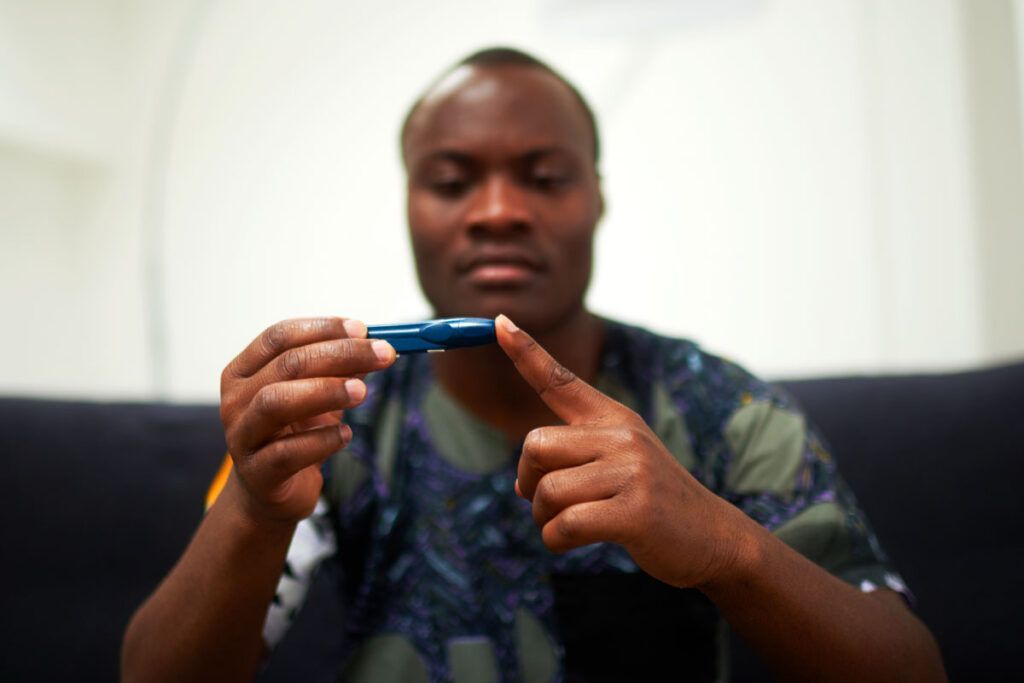Hyperglycemia is the medical term for high blood sugar. This refers to blood glucose levels above the optimal range. Still, a wide range of possibilities go from slightly higher to significantly higher.
In some cases, extremely high blood sugar becomes a medical emergency.
Blood sugar levels are measured using milligrams per deciliter (mg/dL) or millimoles per liter (mmol/L). Doctors often use a blood glucose meter to analyze a small blood sample, typically taken from a finger prick, and determine the glucose concentration in the blood.
Treatment is available and effective for high blood sugar. Timing is key for critical high blood sugar, and emergency medical care is lifesaving.
Blood sugar levels: What is ‘too high’?

Your blood sugar levels are significantly high if you get a reading above 126 mg/dL. Anything above 180 mg/dL needs prompt medical care. Any reading above 250 mg/dL is a critical medical emergency.
A medical emergency means your blood sugar levels may jeopardize your health and life, and you need immediate medical intervention to lower those safely. Going to the emergency room is highly advised.
Blood sugar ranges
For a healthy adult, the standard range for fasting blood sugar levels (measured after an overnight fast) is generally 70–100 mg/dL.
However, if you have diabetes, target ranges for blood sugar levels may differ depending on the type of diabetes, age, overall health, and other individual factors. Your healthcare professional may provide you with blood sugar ranges for your case.
According to the World Health Organization (WHO), the expected values for fasting blood glucose in adults are:
- Normal range: 70–100 mg/dL
- Low blood sugar (hypoglycemia): below 70 mg/dL
- High blood sugar (hyperglycemia): 100–125 mg/dL
- Critical high levels: above 250 mg/dL
There are generally no significant differences in blood sugar ranges between males and females, although hormonal fluctuations during the menstrual cycle may temporarily affect blood sugar levels.
Factors like high carbohydrate foods, stress, and dehydration may also temporarily raise blood sugar levels in both males and females, although individual responses may differ.
Symptoms of high blood sugar
Symptoms of high blood sugar may vary depending on how high they are and for how long. Typically, they may include:
- urinating often
- feeling more thirsty
- unexplained fatigue
- blurred vision
- sudden and persistent headaches
Symptoms of very high blood sugar levels, indicating a medical emergency, may include:
- extreme thirst that does not go away by drinking fluids
- rapid breathing
- heart palpitations
- abdominal pain
- mental confusion or disorientation
- fruity scented breath
- numbness in one or more limbs
- loss of consciousness
Immediate medical assistance is needed for these severe symptoms.
Causes of high blood sugar
Possible causes of persistent high blood sugar may include:
- poor insulin production or insulin resistance
- insufficient insulin dosage if you live with diabetes
- untreated or undiagnosed diabetes
- medication side effects, such as from corticosteroids
- health conditions like hormonal imbalances or pancreatic disorders
- chronic stress
Persistent high blood sugar may lead to health complications if left untreated. Common complications may include:
- diabetic ketoacidosis (DKA)
- cardiovascular diseases
- nerve damage
- kidney failure
- hyperglycemic hyperosmolar state (HSS)
Can a person without diabetes have high blood sugar levels?
A person without diabetes can have high blood sugar levels.
Causes of high blood sugar without a diagnosis of diabetes may include:
- release of hormones due to high levels of psychological stress
- side effects from certain medications, such as corticosteroids
- pancreatic disorders such as pancreatitis
- menstrual periods, which cause hormonal imbalances
- dehydration
How quickly can you lower blood sugar levels?
Lowering blood sugar levels quickly may depend on factors like:
- how high your blood sugar is
- whether you live with diabetes or other conditions
- your blood sugar intervention method (insulin shot or oral medication)
- whether the insulin is fast-acting or slow release
- the cause and duration of your blood sugar spike
- how active you are, as exercise tends to lower blood sugar levels quickly
- your natural body’s response
Generally, a noticeable decrease in your blood sugar levels may take minutes to hours, depending on the above factors and medical intervention.
Medical intervention can lower your levels quickly and safely for significantly high blood sugar.
If you need help covering the cost of medications, the free Optum Perks Discount Card could help you save up to 80% on prescription drugs. Follow the links on drug names for savings on that medication, or search for a specific drug here.
